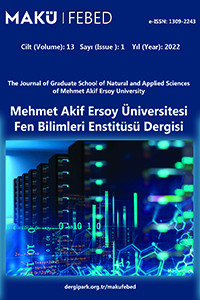İlköğretim yedinci sınıf öğrencilerinin orman kavramını algılamaları: fenomenografik bir araştırma
The purpose of this study isto investigate the seventh grade students’, in the center Primary School of Burdur, view on forests, to define and to explain how the students perceive the term forest, using the technique of phenomengraphic. Moreover the seventh grade students’attitude towards forest is expected to be determined in this study. This study is made by totally 343 seventh grade students between the education years of 2007-2008. When students’ comments are analyzed, seven different qualit ative category in ex plaining forest are found . Except for them, an explaination category is notreached. When some students explain the term forest as a need for living, some of them explain it as the place where they spend time and thers explain it as the place from which humans benefit
Anahtar Kelimeler:
Forest, Attitude, Attitude Towards Forest, Concept
Seventh grade primary school students’ understanding of forest: a phenomenographic study
The purpose of this study isto investigate the seventh grade students’, in the center Primary School of Burdur, view on forests, to define and to explain how the students perceive the term forest, using the technique of phenomengraphic. Moreover the seventh grade students’attitude towards forest is expected to be determined in this study. This study is made by totally 343 seventh grade students between the education years of 2007-2008. When students’ comments are analyzed, seven different qualit ative category in ex plaining forest are found . Except for them, an explaination category is notreached. When some students explain the term forest as a need for living, some of them explain it as the place where they spend time and thers explain it as the place from which humans benefit
Keywords:
Forest, Attitude, Attitude Towards Forest, Concept,
___
- Demirkaya, H., Genç, H. (2006). Ormana İlişkin Tutum Ölçeği Geliştirilmesi. Kastamonu Eğitim Dergisi, 14(1), 39- 46.
- Konukçu, M. (2001). http://ekutup.dpt.gov.tr/ormancil/konukcum/ormancil.pdf, Erişim Tarihi: 10.09.2008.
- Eler, Ü., (2008). Türkiye’de Orman Amenajman Yönetmeliğinin Tarihsel Gelişimi. Süleyman Demirel Üniversitesi Orman Fakültesi Dergisi, Seri: A, Sayı: 2, 89-98.
- Akın, G., (2007). Küresel Çevre Sorunları. C.Ü. Sosyal Bilimler Dergisi, 31(1), 43-54
- Tunçel, H. (2002). Türk Öğrencilerin Zihin Haritalarında İslam Ülkeleri. Fırat Üniversitesi Sosyal Bilimler Dergisi, 12 (2), 83-103.
- Marton, F. (1994). http://www.ped.gu.se/biorn/phgraph/civil/main/2res.appr.html,
- Erişim Tarihi: 11.09. 2008.
- Çepni, S., (2007). Araştırma ve Proje Çalışmalarına Giriş. Celepler Yayıncılık, No:3, 310s. Trabzon.
- Marton, F., (1981). Phenomenography-describing conceptions of the world around us. Instructional science, 10, 177-200.
- Mc Cosker, H.; Barnard, A.;, Gerber, R. (2003). Available: http://nursingworld.org/ojin/topic17/tpc17_6.htm
- Frost, C.J., (2000). Comparing Attitudes About Forests Between Young Adults in North – Central Florida and The Peruvian Amazon. Unpublished Master Thesis(Yayınlanmamış Doktora Tezi).
- Kellert, S.R., (1984). Assessing Wildlife and Environmentalvalues In Cost-Benefit Analysis. J. Env. Man. 18, 355-363.
- Kellert, S.R., (1985). Attitudes Toward Animals: Age Related Development Among Children. Journal of Environmental Education, 16 (3), 29-39.
- Kellert, S.R., Black, M., Reid Rush, C., Bath, A.J., (1996). Human Culture and Large Carnivore Conservation In North America. Con. Bio. 10, 977-990.
- Strommen, E., (1995). Lions, Tigers and Bears, Oh My Children’s Conceptions Of Forest and Their Inhabitantes. Journal Of Research in Science Teaching, 32, 683- 698.
- Yayın Aralığı: Yılda 2 Sayı
- Başlangıç: 2010
- Yayıncı: Burdur Mehmet Akif Ersoy Üniversitesi
Sayıdaki Diğer Makaleler
İlköğretim yedinci sınıf öğrencilerinin orman kavramını algılamaları: fenomenografik bir araştırma
Hasan GENÇ, Hilmi DEMİRKAYA, Gülşah KARASAKAL
Determination of Protective Activity of Cetraria islandica (L.) Ach. on Drosophila melanogaster
